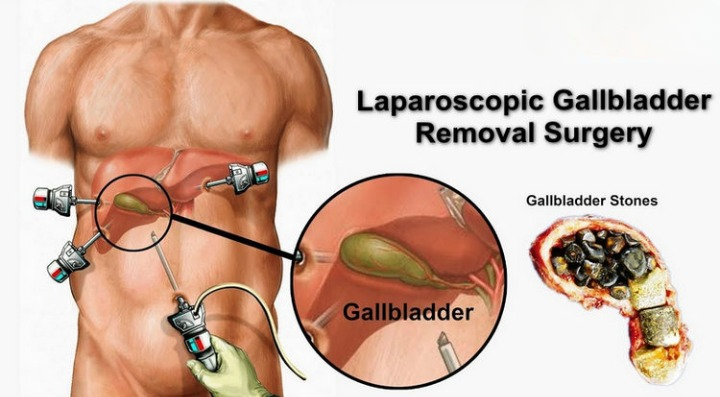
Laparoscopic Surgery for Gallbladder Removal: What to Expect
If you’ve been dealing with persistent gallbladder pain, your doctor might recommend laparoscopic cholecystectomy, a minimally invasive procedure to remove the gallbladder. While the thought of surgery can be overwhelming, laparoscopic techniques make the process smoother, with quicker recovery times and minimal scarring. Here’s a complete guide to what you can expect before, during, and after the surgery, with insights from Dr. Mihir Chitale- an experienced laparoscopic surgeon in pune.

Understanding Laparoscopic Gallbladder Surgery
Laparoscopic surgery is a modern surgical technique that allows doctors to remove the gallbladder with small incisions rather than a large open cut. This approach results in faster recovery, less pain, and minimal scarring.
During the procedure:
- The surgeon makes 3 to 4 small incisions in the abdomen.
- A tiny camera (laparoscope) is inserted through one of the incisions, allowing the surgeon to see inside your body.
- Using special surgical tools, the surgeon carefully removes the gallbladder.
The incisions are then closed with stitches or surgical glue.
Why is Gallbladder Removal Necessary?
- The gallbladder is a small organ that stores bile, a digestive fluid that helps break down fats. Sometimes, gallstones (hardened deposits of bile) can form, leading to severe pain, nausea, and digestive issues. If gallstones cause frequent discomfort or complications like inflammation, infection, or blockage, removing the gallbladder becomes the best option.

Before the Surgery: Preparation Steps
A few preparatory steps before the surgery:
- Medical Tests: Blood tests, ultrasound, or an MRI may be done to assess your condition.
- Dietary Changes: You may be advised to avoid certain foods or fast for a few hours before the procedure.
- Medications: Some medications may need to be stopped temporarily to prevent complications.
During the Surgery: The Procedure
Laparoscopic gallbladder removal is performed under general anesthesia and typically takes about 45 minutes to an hour. Here’s how it works:
- Small incisions are made in the abdomen.
- A tiny camera (laparoscope) is inserted to guide the surgeon.
- The gallbladder is carefully detached and removed.
- The incisions are closed with stitches or surgical glue.
With Dr. Mihir Chitale’s expertise in laparoscopic surgery, patients benefit from less pain, smaller scars, and a faster recovery compared to traditional open surgery.

After the Surgery: Recovery and Healing
Most patients can go home the same day or within 24 hours after the procedure. Dr. Mihir Chitale provides the following recovery guidelines:
- Mild Pain and Discomfort: Some soreness around the incisions and in the shoulder (due to gas used during surgery) is normal.
- Dietary Adjustments: Start with light, easily digestible foods before gradually returning to a normal diet.
- Physical Activity: Avoid heavy lifting or strenuous activities for a couple of weeks.
- Follow-Up Care: Your doctor will schedule a follow-up visit to monitor healing.
Life After Gallbladder Removal
Most people adjust well to life without a gallbladder. Your liver continues to produce bile, though digestion may take some time to regulate. Some patients experience temporary digestive changes like bloating or loose stools, but these usually improve over time.
Final Thoughts
Under the care of Dr. Mihir Chitale, an experienced laparoscopic surgeon in pune, gallbladder removal is a safe and effective procedure that provides long-term relief from gallstone-related issues. If you’re experiencing persistent gallbladder pain, consulting Dr. Mihir Chitale about this surgery could be the first step toward a healthier, pain-free life.

